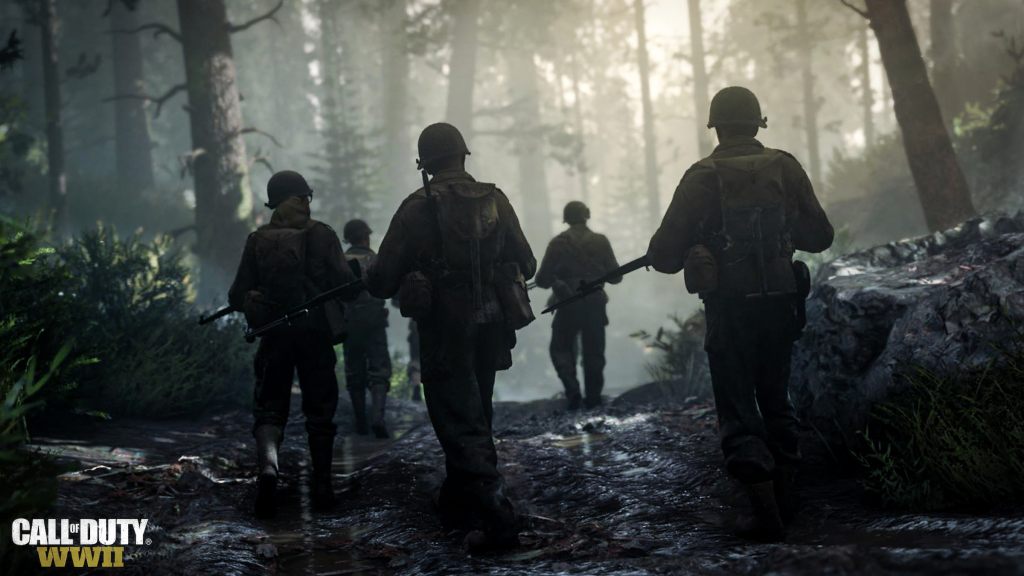Shooters today are really starting to feel the same these days. Battle royale games dominate streams and lobbies, and futuristic or modern shooters keep popping up with flashy maps and gadgets. For veterans who have spent years playing games within the genre, the sense of history and real-world conflict that once made shooters memorable is fading away. Modern releases absolutely look impressive, but the worlds rarely feel grounded or lived in. Players can drop into a match anywhere in the future or a generic city, but it rarely feels like stepping into a battle that actually mattered or actually happened.
Videos by ComicBook.com
Eight years ago, Call of Duty: WWII gave us exactly that. It returned to the battlefields of history with weapons, maps, and a campaign that felt completely rooted in reality, boots on the ground. The storylines, environments, and even the smallest details showcased the era in a way that brought it to life through the lens of a modern-made shooter. It reminded us all exactly what it felt like to fight in a time that shaped history, rather than a futuristic playground created through someone’s imaginative fiction.
Modern Shooters Are Losing the Historical Edge

Players who have spent years immersed in shooters can see a trend in modern releases: the historical roots that once defined the genre are all but ignored. Battle royale and sci-fi shooters dominate the market now, and even large-scale AAA titles seem content to focus on flashy mechanics rather than authentic settings. The trenches, bombed-out cities, and real-world conflicts that once defined shooters are largely absent from the current shooter landscape. For anyone who grew up running through historically inspired maps, this focal shift and omission are both noticeable and disappointing.
Take Battlefield 6’s REDSEC as an example. Though undoubly visually impressive and mechanically solid, it still feels like a game untethered from the rest of history, despite being rooted in modern times. The maps and guns may look modern, but the world itself lacks the context and atmosphere that made WWII shooters resonate so impactfully. There is excitement in the polish, but not in the sense that you are stepping into a specific time and place that actually feels alive. That’s really its only problem.
Veterans of historical-based shooters miss the authenticity of shooters rooted in the reality of years gone by. The thrill of running through the beaches of Normandy or the ruins of Stalingrad is not just nostalgia; it is an experience tied to history. Modern shooters rarely provide that sense of presence or connection to the past, leaving a gap that is begging to be filled. There was a time when all we were getting were historical shooters in the genre, but it’s clear the pendulum has swung too far.
Call of Duty WWII and the War Modern Games Left Behind

Due to the current influx of futuristic and modern shooters, Call of Duty: WWII reminds us why the historical shooter mattered. From the streets of Paris to the hedgerows of France, the environments were designed with a level of genuine realism that made the battles feel highly impactful. Every map, every gun, every campaign moment was rooted in some etching of history, letting players experience an era rather than an imaginary battlefield number 10. For veterans of the historical approach, it offered a gameplay experience that felt lived in and dangerous, something modern shooters seldom capture these days.
The single-player campaign made you feel like you were actually there, the goal of a solid Call of Duty campaign. You weren’t just running around generic maps. You were storming beaches, sneaking through ruined towns, and getting caught in the chaos that real soldiers faced. Of course, the cinematic nature of a Call of Duty campaign influenced the product, but the campaign still maintained a level of believability with its scope. Every mission had weight, from the tension of holding a line under fire to the chaos of a full-scale assault. Multiplayer kept that same vibe going. Bombed-out streets, fortified villages, and wide-open battlefields. These were not just pretty backdrops. They were created, intentionally rooted in historical reality, and that kind of historical authenticity hits differently than anything modern shooters tend to offer.
Even today, we can look back at COD: WWII as a strong reminder of what historical shooters can achieve when taken seriously. The game proved, beyond the shadow of a doubt, that you do not need jetpacks, energy rifles, or wallrunning mechanics to create an engaging, memorable shooter. A true focus on real-world conflicts and believable environments is enough to immerse players fully if realized well. At this point, it is time to step back into the real conflicts that shaped shooters and remind players what history looks and feels like in a shooter.
What do you think? Leave a comment below and join the conversation now in the ComicBook Forum!









